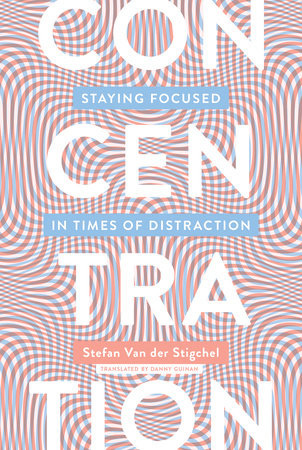Daydreaming and Concentration: What the Science Says

You’re probably familiar with the phenomenon of suddenly catching yourself daydreaming while reading. Your eyes travel back and forth across the text, but the information isn’t being processed. Instead, you’re thinking about the vacation you have planned or the argument you thankfully resolved yesterday. Before you know it, you’ve reached the bottom of the page, but you have no idea what you have just read.

When you are daydreaming (or mind-wandering, as it is more accurately referred to within scientific circles), memories that you thought were lost forever can come to the surface again, or you may suddenly find yourself realizing that you have forgotten someone’s birthday — the kinds of things that don’t happen when you are deep in concentration. The neural activity that can be observed when you are daydreaming is very similar to that found in the “default network,” a network of regions in the brain that are active during periods of rest. This is a brain state in which you are not actively performing any task; in other words, when your working memory is empty.
We actually spend more of our waking hours daydreaming than you might think — as much as half our day, according to at least one study. About a decade ago, scientists at Harvard developed an app that asks test subjects what they are doing at any given moment during the day (a method called experience sampling) and to report their level of happiness at that particular moment. The scientists are still collecting additional data, but they have already compiled a massive amount of it — approximately 250,000 measurements from more than 2,000 individuals were recorded in that first study alone.
Their findings showed that the participants spent 47 percent of their day daydreaming instead of working on the task they were supposed to be carrying out. When the test subjects indicated that they were thinking of something other than their intended task, they were asked whether they were thinking happy, neutral, or unpleasant thoughts. When the study was published in Science magazine, the headline, surprisingly enough, was, “A Wandering Mind Is an Unhappy Mind.” The participants indicated that they were significantly unhappier when they were daydreaming than when they were performing a certain activity.
It is quite possible that we are a lot happier when we are fully immersed in our work than when we are daydreaming.
These results have interesting consequences for people who, in their pursuit of the perfect life, believe that never having to work a single day again would make them happy. Although this is very much open to interpretation — happiness is a relative concept and one that is notoriously difficult to measure, and the sample taken was not entirely representative of the population as a whole — it is quite possible that we are a lot happier when we are fully immersed in our work than when we are daydreaming. This idea can also be found in many forms of relaxation therapy in which people are advised to focus on the activity currently occupying their mind (so that they can “be in the moment”), and the Harvard study is often cited in support of such techniques. As the scientists themselves so succinctly concluded, “A human mind is a wandering mind, and a wandering mind is an unhappy mind.”
There are significant differences between individuals when it comes to how much time we spend daydreaming. We are all familiar with the image of a child staring out of a classroom window into the distance. You may even be a dreamer yourself. In which case you may not be surprised to learn that daydreaming can have a negative effect on your ability to perform a specific task. It may come as a surprise, however, that on average people who are inclined to daydream a lot have a lower working memory capacity and score worse on IQ tests. That said, we must remember that we are talking about a correlation here and it does not necessarily mean that daydreaming leads to a lower level of intelligence, although there is a strong relationship between the two. And that makes sense — you need a good working memory to be able to maintain your concentration, after all. Given the fact that you suppress your default network when you are concentrating, this automatically means that your default network becomes activated again when you suffer a lapse in concentration, and then you start daydreaming. You could say that daydreaming is actually concentration gone wrong.
In another excellent daydreaming experiment, test subjects were asked at random moments while performing a task whether their attention was actually focused on the task or whether their mind was somewhere else entirely. The results showed, perhaps unsurprisingly, that the periods of reduced attention were the periods during which the most mistakes were made, but they also offered a possible route out of the daydreaming maze: the prospect of a reward. When test subjects knew that they would be given a reward if their performance was good, not only did their performance improve, but they were also less inclined to daydream. So the next time you want to concentrate intensively on your work and avoid daydreaming, you could try promising yourself a reward.
So is it all bad news when it comes to daydreaming? Well, some scientists believe that daydreaming also serves important functions. For example, when you are less preoccupied with the world around you, it is easier to focus on yourself and make plans for the future. When people are asked what their daydreams are about, many say that they often concern personal matters, otherwise known as autobiographical planning. These kinds of thoughts can serve important functions for our well-being, especially when the task on which you are supposed to be focusing is not especially important or does not require all that much attention.
When test subjects knew that they would be given a reward if their performance was good, not only did their performance improve, but they were also less inclined to daydream.
Another benefit of daydreaming is that it can make a mind-numbing task more enjoyable. In one study, a team of cognitive neuroscientists found that after test subjects had been asked to perform a very tedious task for 45 minutes, they reported feeling less happy than they did beforehand. However, the drop in the level of happiness was less pronounced among those test subjects who reported having daydreamed during the task. A potential solution for boredom is often included on the list of possible functions of daydreaming. You could regard the brain as a machine that always has to be doing something. So when you’re killing time, you might allow your thoughts to whisk you away briefly to some imaginary future.
One of the most important possible functions often attributed to daydreaming is the stimulation of creativity, thinking up new ideas and taking the time to solve complicated problems — the power of the unconscious. Books about concentration and creativity often advise readers to daydream and let ideas appear of their own accord. The theory goes that when you are daydreaming, your unconscious mind goes about solving your problems for you. In fact, the argument goes, it would be better to leave this kind of thing to your unconscious mind altogether.
But this claim is one worth investigating. There is no doubt that taking a break during work so that you can come back later and tackle a problem with a clear mind is a good idea. That much is intuitive. But can unconscious processes really solve problems for you or unleash your creativity? This argument is based primarily on the findings of the psychologist Ap Dijksterhuis, who has written a number of influential scientific books and articles on this subject. His findings are surprising, given what we already know about the human brain. The functions of calculation and reasoning are the domain of the working memory and they require concentration. The working memory is the place where all of the information in the brain is brought together and where the tools we need to be able to consider that information are located. This is also the information of which we are conscious, and on the basis of these definitions there cannot be any such thing as “unconscious thinking.” After all, that would mean that we also have an “unconscious” working memory that is just as powerful as our conscious working memory. In recent years, the findings of Dijksterhuis and his colleagues have come under increasing scrutiny. It turns out there is no clear evidence to suggest that the brain can solve problems on its own while you are taking a mental siesta.
However, for many of us, a mental pause can have a positive effect, hence the often-heard suggestion that we should “sleep on it” when faced with making an important decision. Switching your attention to something else can give you the time you need to approach a matter from a different perspective and maybe even reach a different conclusion. After all, the brain can become exhausted from the effort involved in trying to ignore all of the stimuli, both internal and external, with which it is constantly being bombarded. So the next time you need a reset, go outside and let your mind wander. Who knows what might happen in your stream of consciousness.
Stefan Van der Stigchel is Professor of Cognitive Psychology at Utrecht University and the author of “Concentration: Staying Focused in Times of Distraction,” from which this article is adapted.


